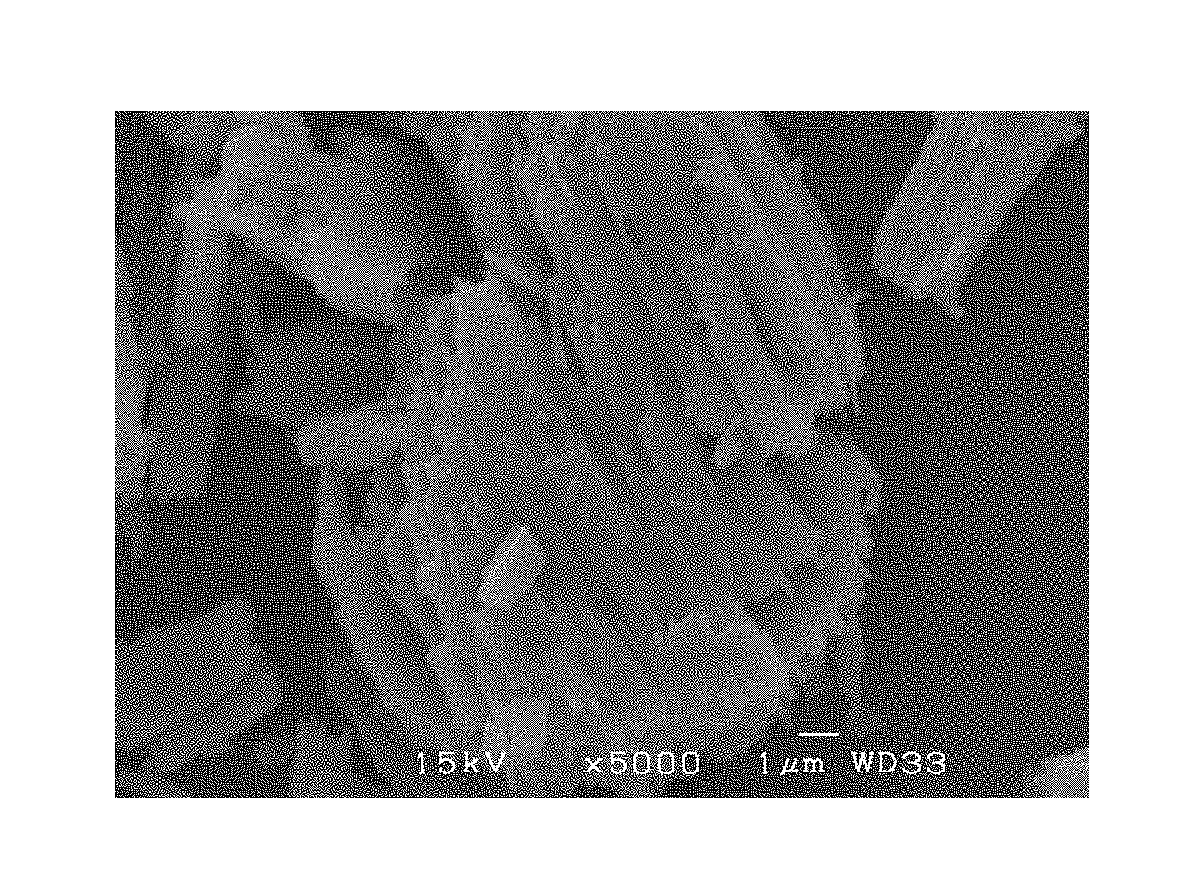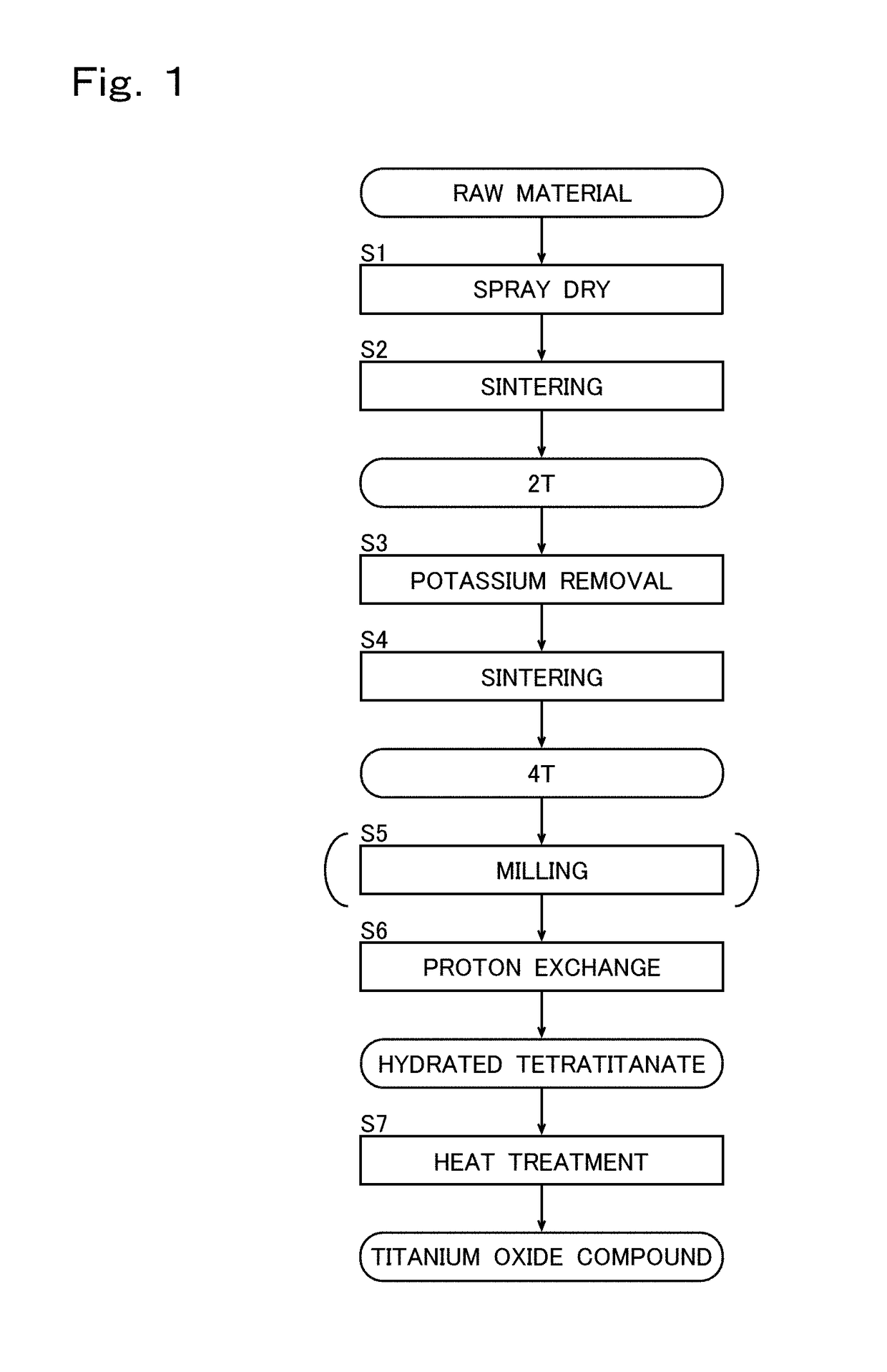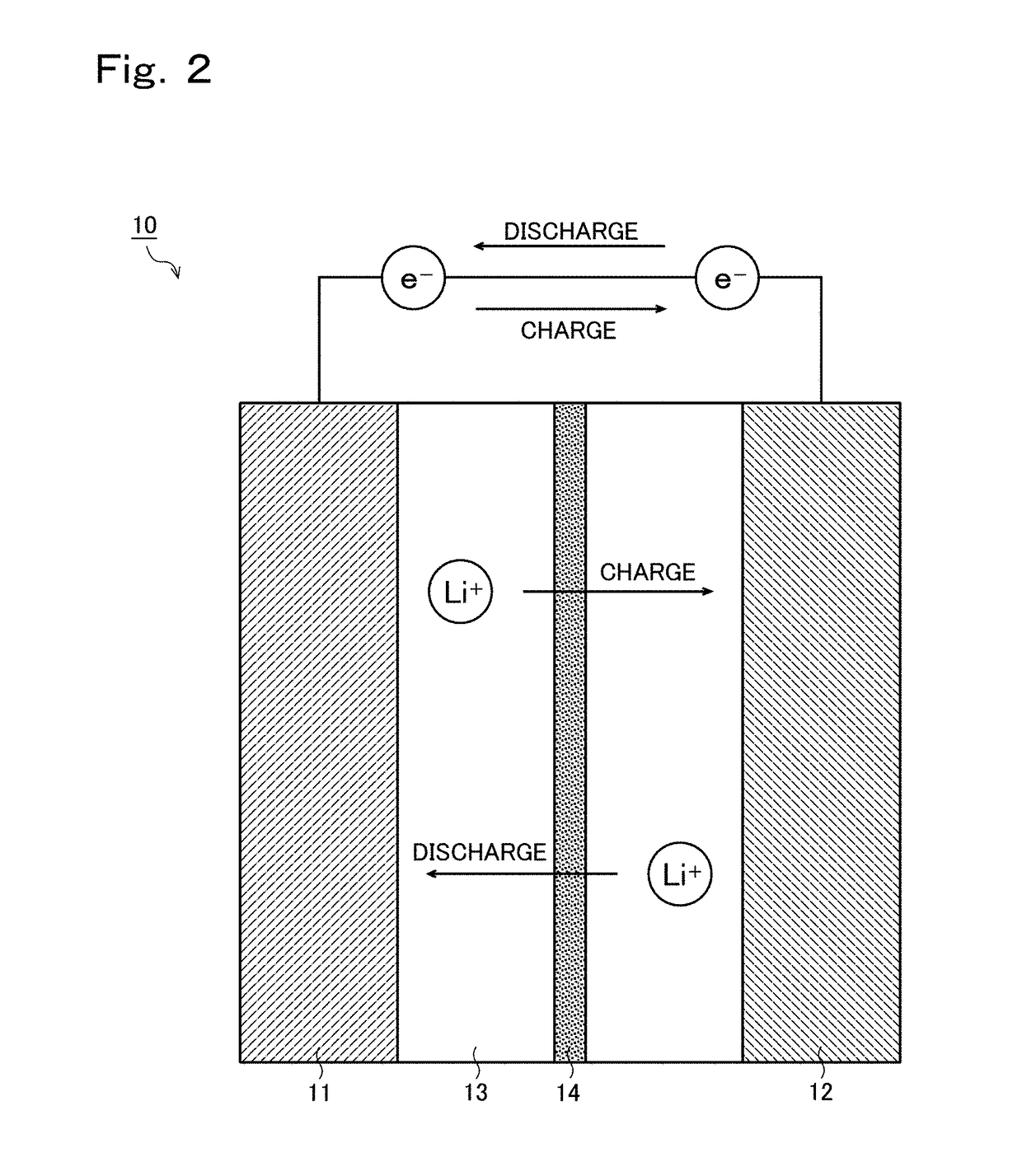Titanium oxide compound, and electrode and lithium ion secondary battery each manufactured using same
a lithium ion secondary battery and compound technology, applied in the field of titanium oxide compound, can solve the problems of reducing the risk of internal short circuit, abnormal heat and ignition of the lithium ion secondary battery, and heating of the negative electrode or other members, so as to reduce the specific surface area, and increase the initial charge/discharge efficiency
- Summary
- Abstract
- Description
- Claims
- Application Information
AI Technical Summary
Benefits of technology
Problems solved by technology
Method used
Image
Examples
example 1-1
[0048]After mixing 26.2 weight parts of titanium oxide (TiO2) containing 0.01 mass % of calcium (Ca) to 100 weight parts of water, the mixture was stirred for 30 minutes. After that, 23.8 weight parts of potassium carbonate (K2CO3) was added, and the mixture was stirred further for one hour. The mixed solution was spray dried at 200° C., and was heat treated at 800° C. for three hours, so as to synthesize the potassium dititanate (K2Ti2O5).
[0049]The potassium dititanate obtained by the synthesis described above was soaked in water and then stirred by a mixer for two hours for removing potassium. After removing supernatant liquid, dehydration was performed using a vacuum filter. Then, after drying at 120° C. during one night, heat treatment was performed at 850° C. for two hours, so that potassium tetratitanate (K2Ti4O9) was synthesized.
[0050]The potassium tetratitanate obtained by the synthesis described above was added to 0.5 M sulfuric acid solution and was stirred for two hours f...
example 1-2
[0053]Except that titanium oxide containing calcium at 0.15 mass % was used, the same process as Example 1-1 was used so as to synthesize the titanium oxide compound.
[0054]The content of calcium in the obtained titanium oxide compound was 0.11 mass % as a result of the inductively coupled plasma emission spectro-photometric analysis.
[0055]In addition, the average aspect ratio of the primary particles of the obtained titanium oxide compound was 4.58, the average pore diameter was 43 μm, the BET specific surface area was 9.38 m2 / g, and the pore volume was 0.100 cm3 / g. In addition, the X-ray diffraction spectrum (X-ray source: Cu—Kα) of the obtained titanium oxide compound was that indicating bronze-type titanium oxide having the tunnel structure.
example 1-3
[0056]Except that 26.2 weight parts of titanium oxide and 3.94 weight parts of calcium carbonate were mixed to 100 weight parts water and were stirred for 30 minutes, the same process as Example 1-1 was used so as to synthesize the titanium oxide compound.
[0057]The content of calcium in the obtained titanium oxide compound was 1.15 mass % as a result of the inductively coupled plasma emission spectro-photometric analysis.
[0058]In addition, the average aspect ratio of the primary particles of the obtained titanium oxide compound was 3.52, the average pore diameter was 34 μm, the BET specific surface area was 7.03 m2 / g, and the pore volume was 0.059 cm3 / g. In addition, the X-ray diffraction spectrum (X-ray source: Cu—Kα) of the obtained titanium oxide compound was that indicating bronze-type titanium oxide having the tunnel structure.
PUM
| Property | Measurement | Unit |
|---|---|---|
| specific surface area | aaaaa | aaaaa |
| charge capacity | aaaaa | aaaaa |
| BET specific surface area | aaaaa | aaaaa |
Abstract
Description
Claims
Application Information
 Login to View More
Login to View More - R&D
- Intellectual Property
- Life Sciences
- Materials
- Tech Scout
- Unparalleled Data Quality
- Higher Quality Content
- 60% Fewer Hallucinations
Browse by: Latest US Patents, China's latest patents, Technical Efficacy Thesaurus, Application Domain, Technology Topic, Popular Technical Reports.
© 2025 PatSnap. All rights reserved.Legal|Privacy policy|Modern Slavery Act Transparency Statement|Sitemap|About US| Contact US: help@patsnap.com



